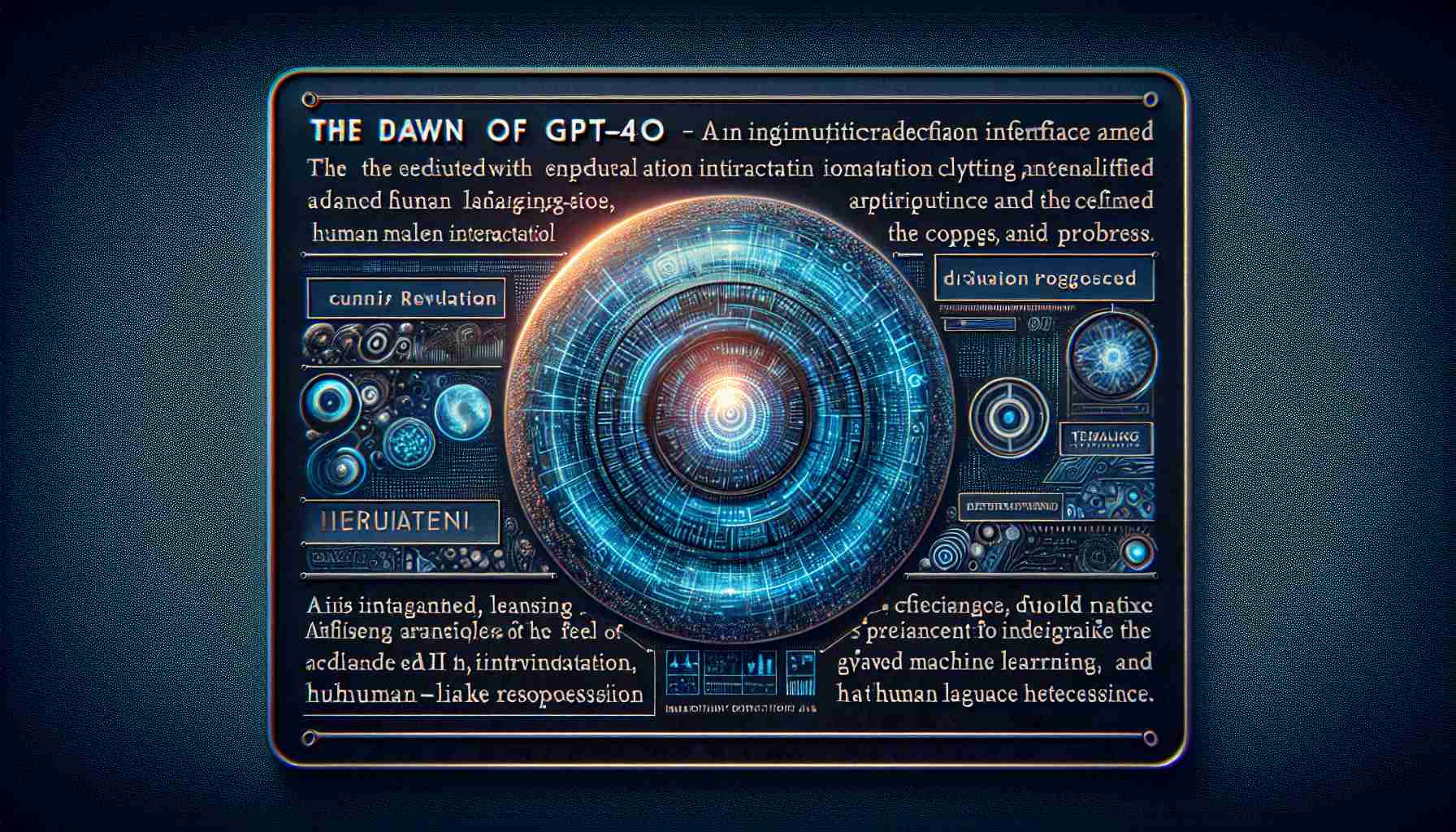The Multimodal AI Revolution
OpenAI’s latest technological marvel, GPT-4o, stands as a beacon of progress in the AI industry with its unique ability to comprehend and execute voice, image, and video commands. Launched on May 13, 2024, this innovation is poised to redefine the future of human-computer interaction through its seamless multimodal capabilities. Free for use on both mobile and desktop devices, GPT-4o aims to bring artificial intelligence into our daily lives in ways previously unimagined, paving the way for more natural and productive communication with machines.
The system’s multimodal approach pioneered by OpenAI means users can now engage with a single application that understands and responds to a variety of inputs. Mira Murati, the company’s CTO, has showcased the swift and smooth performance of GPT-4o, which operates far more rapidly than any of its predecessors, enhancing user experience. Live demonstrations have illustrated GPT-4o’s ability to effortlessly tackle conversational voice commands, interpret video feeds for mathematical problem-solving, and narrate creative stories, indicating its potential for diverse applications from education to everyday practical tasks.
Integration and Accessibility Redefined
A key breakthrough of GPT-4o is its unified integration of multiple AI technologies into a singular, free-to-use system. By converging its previously separate offerings, OpenAI has simplified user access and increased AI processing speed and efficiency. The company plans a phased roll-out, allowing a wider audience to explore GPT-4o’s capabilities while addressing potential challenges, such as AI “hallucinations” where incorrect or fabricated information is generated.
A Competitive Edge in the AI Market
While tech behemoths like Google and Apple are enhancing their virtual assistants, OpenAI establishes a competitive edge with GPT-4o’s integrated multimodal capacity. This positions OpenAI at the forefront of the race to create virtual assistants that not only answer queries but also execute complex tasks in real-time, such as scheduling meetings or analyzing documents.
Challenges and Future Prospects
Despite the promise of GPT-4o, the battle against AI inaccuracies persists. OpenAI is committed to refining these systems to foster user trust and facilitate widespread adoption. Moving beyond these hurdles, the industry continues to evolve ‘AI agents’ that can undertake practical tasks with greater efficiency and reliability.
The Evolution of Human-Machine Interaction
GPT-4o signifies a major leap in multimodal AI, shaping a new chapter in human-machine relations. As AI becomes more entwined with our everyday existence, it’s crucial to balance the acknowledgement of its benefits with consideration of its long-term implications. Embracing AI’s potential for more intuitive interaction, we may see transformative effects across various sectors, enhancing global quality of life.
Important Questions and Answers:
Q: What are AI “hallucinations”?
A: AI “hallucinations” refer to instances when AI systems generate incorrect, misleading, or entirely fabricated information. This can occur due to limitations in the training data or challenges in the underlying algorithms used by the AI. Managing such inaccuracies is crucial in ensuring the reliability and trust in AI applications.
Q: How does GPT-4o handle different types of inputs?
A: GPT-4o is designed to understand and respond to a plethora of inputs including voice, image, and video. It uses advanced algorithms and neural network architectures that process and analyze these different data formats, allowing it to perform tasks that were previously difficult to automate.
Q: What are the practical applications of GPT-4o?
A: GPT-4o has potential applications in numerous fields, such as education, where it could provide tutoring or aid in learning new languages; in professional settings, for document analysis and meeting scheduling; in creative industries, for story narration and content creation; and in everyday tasks, like navigation or recipe preparation.
Key Challenges or Controversies:
Challenge: Ensuring the privacy and security of user data is a significant challenge, particularly since multimodal AI systems like GPT-4o process vast amounts of potentially sensitive information.
Challenge: AI biases persist as a controversy, arising from the datasets used for training such systems. There must be ongoing efforts to make sure the AI treats all users and scenarios fairly.
Advantages and Disadvantages:
Advantages:
– Enhanced user experience with faster and more intuitive interaction.
– Diverse applications across different sectors due to multimodal understanding.
– Free-to-use and accessible on various devices broadens the potential user base.
Disadvantages:
– Potential for generating and disseminating inaccurate information.
– Challenges with addressing AI bias and ensuring ethical use.
– Privacy concerns due to the AI’s processing of potentially sensitive data.
Related links:
– OpenAI
– siri by Apple
– Google Assistant
These links are provided assuming that the URLs were valid as of the knowledge cutoff date.
The source of the article is from the blog revistatenerife.com

